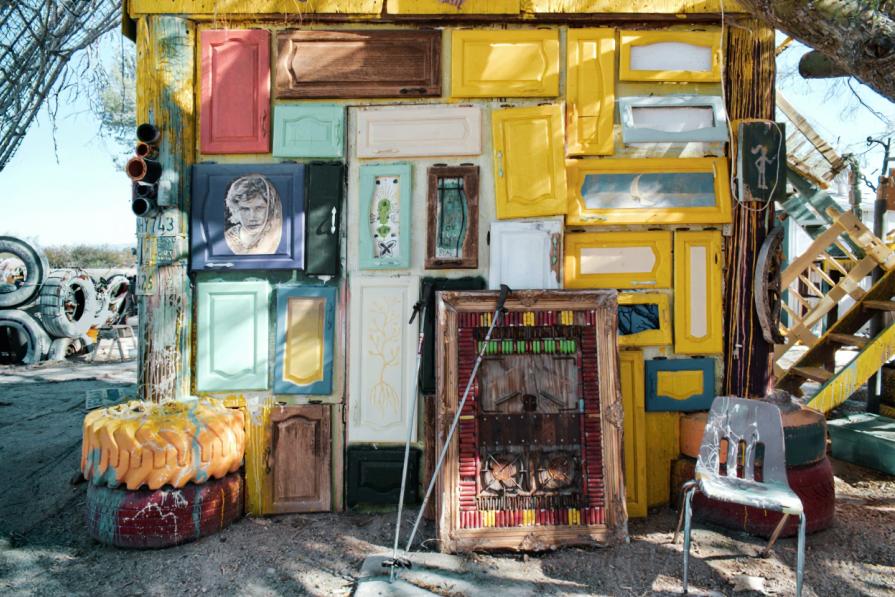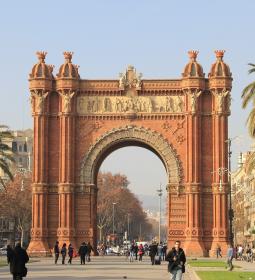When the usual resorts begin to get boring, and excursion routes merge into one, it's time to discover something really unusual! There are cities on the world map that are so different from everything else that it's hard to believe that someone lives in them. But people live there, and quite successfully adapting to conditions from which most would have fled long ago. We have compiled a selection of such places - the strangest, most peculiar and memorable.

A city where the streets are one continuous narrow ribbon: Yanjin, China
This city could be the stage for a film about the post-apocalypse or people surviving on the edge of civilization. Its width at its widest point is only 400 meters! The rest of the space was occupied by steep slopes and the turbulent Nanxi River. However, more than 300,000 people live peacefully on this strip of land.
The houses are lined up in a chain along the water: those closer to the river stand on high concrete piles. The reason is simple: in the spring, the water level rises, and then the lower floors can easily be swept away by a flood. The city stretches for almost 60 km along the gorge. You can go out into the big world through a two-kilometer tunnel.
The trip here is not short - the road from Beijing with a change in Chengdu will take more than 11 hours, but the place is worth it.

A city where you can't die: Longyearbyen, Svalbard, Norway
At first glance, it is a typical northern village with wooden houses and harsh weather. But there is a strange rule here: it is forbidden to die! No, of course, no one will persecute every person who catches a cold, but if a person falls seriously ill, he is urgently sent to the mainland.
The fact is that permafrost does not allow bodies to decompose, and viruses that have fallen into the ground remain active for decades. With the Spanish flu at the beginning of the last century, just such a story happened. Therefore, the cemetery in Longyearbyen has not been used for more than 70 years.
The City of the Dead, Where There Are Almost No Living Left: Colma, USA
A small town in California, located just 7 kilometers from San Francisco, today is known as the city of the dead: about 1500 people live here, but more than one and a half million are buried! Once, due to overpopulation in San Francisco, it was forbidden to bury the dead in the city, and all cemeteries were moved to Colma. Now 70% of its territory is cemeteries.
At the same time, you can safely get there by metro - the station even has the appropriate name.
A commune where people live by their own rules: Slab City, USA
In the Californian desert, a self-governing commune was formed on the site of a former military base. There are no usual amenities here: running water, sewerage, electricity, but about 200 people live here permanently - hippies, pensioners and the homeless. Despite the poverty, Slab City has a library, cafes, eateries, and even art festivals. Once a year, an open-air concert is held here, where people from all over the area come. Everyone survives as best they can: someone installs solar panels, someone uses wind turbines, someone goes to the nearest city for food.

Metropolis of Roads: Chongqing, China
Chongqing can hardly be called just a city - it is the size of a small country. The area is equal to the territory of Austria, and the population exceeds 32 million people! It is known primarily for its roads: for example, it is here that the most intricate interchange in the world was built - 20 overpasses on five levels. Also one of the metro lines passes right through a residential building! Moreover, trains pass between the sixth and eighth floors, while thanks to modern materials, residents practically do not hear noise. There is also the longest arch bridge in the world. This Chongqing is the transport record holder!
Floating City: Makoko, Nigeria
Once an ordinary fishing village on the water, today it is a full-fledged slum area on stilts in Lagos. Makoko stands right on the water, houses here are built from improvised materials, and waste is dumped right under the dwellings.
About 250 thousand people live here. Despite such conditions, there are floating schools, cafes, and hairdressers in Makoko. Medicine is difficult, and the average life expectancy is only 60 years. The city is located very close to the Third Mainland Bridge, but in terms of living conditions, it seems to be on another planet.
City at the Top: Al-Amadiyah, Iraq
This ancient city is located at an altitude of 1400 meters. Its area is tiny - only a kilometer by half a kilometer. Despite this, representatives of different peoples and religions live here, and, surprisingly, quite peacefully. The town is ancient: buildings of the Assyrian era, mosques, temples have been preserved... According to local legends, it was from here that the three wise men set off with gifts for the baby Jesus.
One House, Whole City: Whittier, Alaska
The most compact city imaginable. Almost all of its inhabitants - about 220 people - live in one fourteen-story building! The same building houses shops, a church, a police station and a post office.
The reason is simple - the harsh climate. In winter, snow brings everything in, and polar nights make life outside the house unbearable. You can get to Whittier by train through a tunnel that alternately opens in one direction and the other every 15 minutes. After 22:30, the house closes, and you can get into it only in the morning.

City under the Rocks: Setenil de las Bodegas, Spain
A unique town where streets and houses are literally rooted into the rocks. The houses are built in such a way that the roofs of many of them are huge overhanging stone slabs. The city has stood on this site for more than 800 years, but the settlement here existed as early as the Neolithic era. Once the rocks served as a natural defense against Roman troops, and now they have become the hallmark of the town.
You can get here from Marbella or Ronda - the road takes no more than half an hour.
A City Without Money and Politics: Auroville, India
Auroville was conceived as a utopia where there is no politics, private property and money, people live in harmony, respect each other and nature. There are no usual laws and leaders. The only rule is to live in peace.
Now there are about 2000 inhabitants in Auroville, although the project was originally created for 50 thousand. Tourists often come here: to look at the local architecture, take part in spiritual practices and feel the atmosphere of life outside the usual systems.
A world of strangeness is nearby
Each of these places is an example of how people are able to adapt to a variety of conditions. Someone lives on the water among the waste, someone lives in the rocks, someone lives in a house that has become a whole city... They are all different, with their own stories, ways of life and problems. All of them are surprising! To visit such cities means to see the world without the usual scenery and get impressions that you will not find on standard excursion routes.














